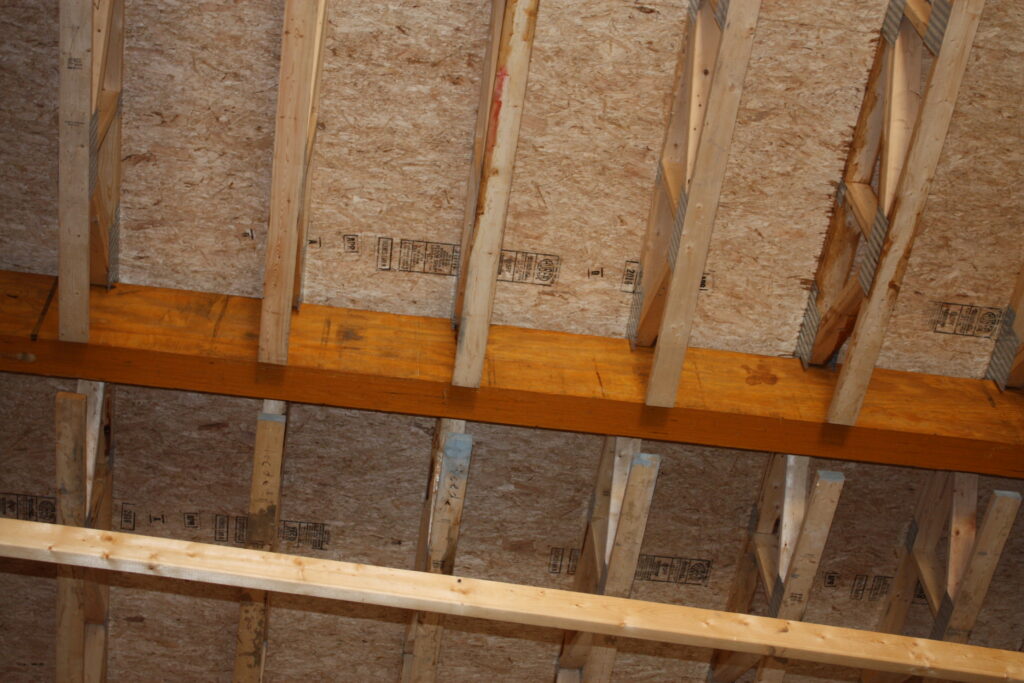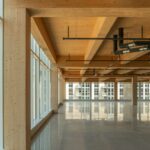Expert Tips
Requirements for Holes or Openings in Shear Walls and Diaphragms
How large do openings in shear walls and diaphragms need to be to require analysis and reinforcement?
IBC 2015 Section 2305.1.1 requires that all openings in shear panels (walls and diaphragms) that materially affect their strength shall be detailed on the plans and shall have their edges adequately reinforced to transfer all shear stresses. A question that commonly comes up when discussing this topic is whether there’s a limit on how large openings in shear walls and diaphragms need to be prior to requiring specific analysis and reinforcement. It is not uncommon to have small holes in shear walls and diaphragms to allow passage of MEP items and it would be advantageous for the structural engineer to be able to permit small openings up to a certain size without needing analysis and reinforcement of the shear panel at the opening.

The FPInnovations document, Design Example: Designing for Openings in Wood Diaphragm, covers their recommendations on when a diaphragm analysis is necessary for small openings. Their design criteria is presented on pages 15 and 16.
In brief, the document recommends that an analysis for a diaphragm with an opening be carried out except where all four of the following conditions are satisfied:
- Opening depth is no greater than 15% of diaphragm depth
- Opening length is no greater than 15% of diaphragm length
- Distance from diaphragm edge to the nearest opening edge is a minimum of three times the larger opening dimension
- The diaphragm portion between opening and diaphragm edge satisfies the maximum aspect ratio requirement
Although this document is specifically written for diaphragms, the same principles could apply to shear walls. However, caution is advised. Shear walls have not been tested with specific goals of providing recommendations regarding small holes. Additionally, if applying these recommendations to walls, the small openings in question are typically restricted to MEP openings. Openings such as windows and doors are typically handled using one of the shear wall methods with openings permitted in the American Wood Council’s document, Special Design Provisions for Wind and Seismic (SDPWS), in the section on perforated or force transfer around openings (FTAO).
WoodWorks also has a few calculated examples of these small opening checks. Email us at help@woodworks.org if you’re interested in learning more.
The 2015 IBC Section 2308 Conventional Light-framed Construction provides prescriptive recommendations for reinforcement at openings in diaphragms for projects that are in seismic design category B, C, D and E as follows:
2308.4.4.1 Openings in floor diaphragms in Seismic Design Categories B, C, D and E. Openings in horizontal diaphragms in Seismic Design Categories B, C, D and E with a dimension that is greater than 4 feet (1219 mm) shall be constructed with metal ties and blocking in accordance with this section and Figure 2308.4.4.1(1). Metal ties shall be not less than 0.058 inch [1.47 mm (16 galvanized gage)] in thickness by 1-1/2 inches (38 mm) in width and shall have a yield stress not less than 33,000 psi (227 Mpa). Blocking shall extend not less than the dimension of the opening in the direction of the tie and blocking. Ties shall be attached to blocking in accordance with the manufacturer’s instructions but with not less than eight 16d common nails on each side of the header-joist intersection.
Openings in floor diaphragms in Seismic Design Categories D and E shall not have any dimension exceeding 50 percent of the distance between braced wall lines or an area greater than 25 percent of the area between orthogonal pairs of braced wall lines [see Figure 2308.4.4.1(2)]; or the portion of the structure containing the opening shall be designed in accordance with accepted engineering practice to resist the forces specified in Chapter 16, to the extent such irregular opening affects the performance of the conventional framing system.
IBC 2015 Section 2308.7.6.1 provides the same criteria for openings in roof diaphragms under a prescriptive design approach.
It should be noted that the above provisions from IBC are a prescriptive approach for seismic design. Wind loads can, and often do, exceed seismic loads and must be designed in the same manner. Without an upper limit on the opening size and using the connections specified, a prescriptive approach can cause diaphragms to be under-designed. When performing an engineered shear wall or diaphragm analysis, the FPInnovations method cited above will provide a method of checking the opening size in relationship to the overall diaphragm size. Under an engineered analysis, the prescriptive provisions from IBC should be used with caution.
In summary, there are certain conditions under which a specific analysis of an opening in a shear wall or diaphragm is not considered by some to be a requirement. Although this is a matter of engineering judgement, the above principles provide a basis for justifying one design approach.



